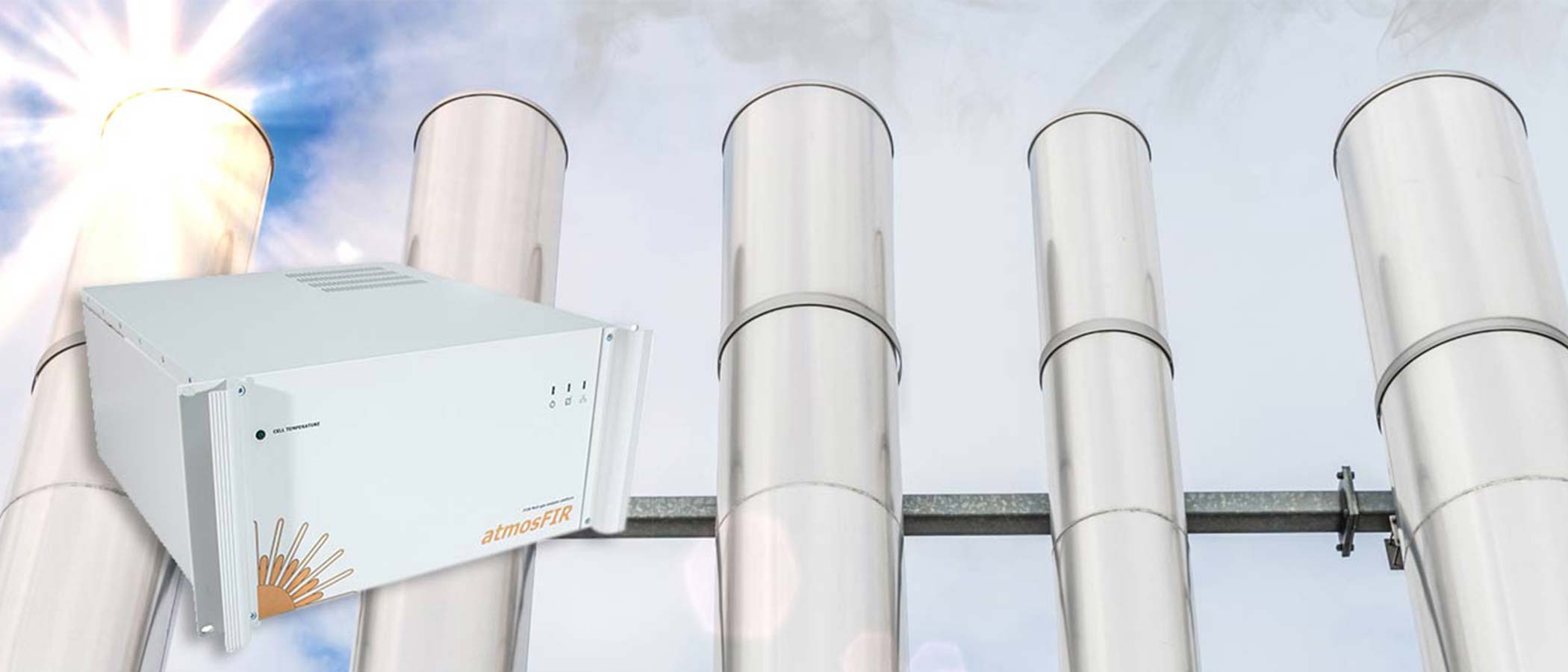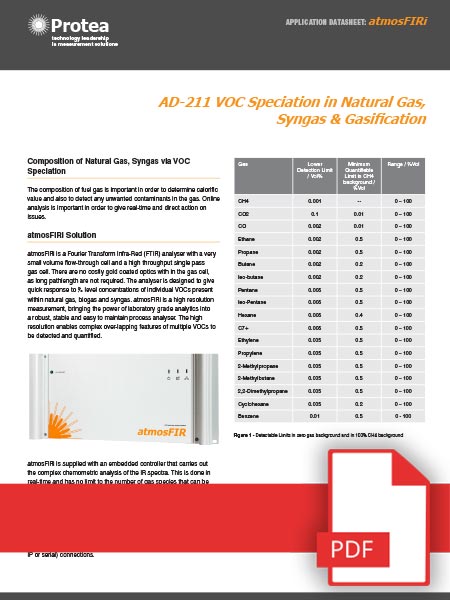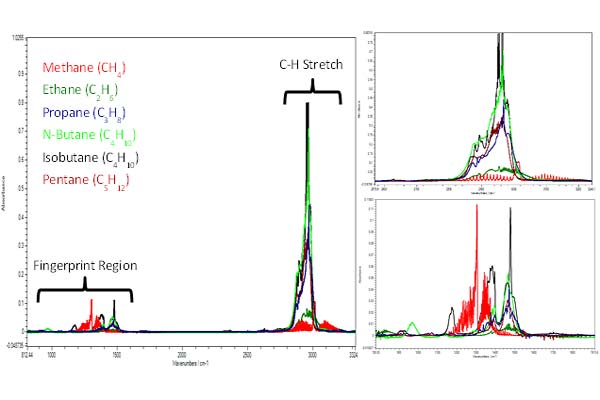Syngas
Energy Research
The composition of fuel gas is important in order to determine calorific value and also to detect any unwanted contaminants in the gas. Online analysis is important in order to give real-time and direct action on issues.
atmosFIRi Solution
atmosFIRi is a Fourier Transform Infra-Red (FTIR) analyser with a very small volume flow-through cell and a high throughput single pass gas cell. There are no costly gold coated optics within the gas cell, as long path lengths are not required. The analyser is designed to give quick response to % level concentrations of individual VOCs present within natural gas, biogas and syngas. atmosFIRi is a high resolution measurement, bringing the power of laboratory grade analytics into a robust, stable and easy to maintain process analyser. The high resolution enables complex over-lapping features of multiple VOCs to be detected and quantified. atmosFIRi.
atmosFIRi is supplied with an embedded controller that carries out the complex chemometric analysis of the IR spectra. This is done in real-time and has no limit to the number of gas species that can be identified and quantified.
Measurement results are displayed and trended on-screen and can be reported in ppm or & Vol concentration values. Protea’s PAS-Pro software can also be customised to give total summation of individual species. We can also offer in-built calculation to give BTU values. Readings are outputted in real-time via 4-20mA, OPC or Modbus (TCP/ IP or serial) connections.
Speciation of VOCs
Protea’s embedded software is designed to run the latest in chemometric algorithms on the full IR spectra collected by the instrument. These methods are designed to identify and separate overlapping spectral responses for gases of interest.
Our methodology does not use a fixed library and spectra and has no limit to the number of separate gas measurements that can be made. The atmosFIR platform can measures hundreds of gases simultaneously. Each gas measurement uses its own custom analysis algorithm and so each measurement optimises the calculation for that gas, ensuring linear responses, the reduction of effects from interferences and a better lower detection limit.
The benefit of FTIR is that it is a full spectrum analysis technique. This means that we can use both the C-H stretch region (where the C-H stretch bonds common in VOCs are found) and also the fingerprint region, where we can identify unique bonds due to specific functional groups. The full spectrum technique also means that the atmosFIRi analyser can measure CO2 and CO from ppm to 100% Vol levels, commonly found in syngas.
Installation and Serviceability
atmosFIRi can be supplied in a 19" rack enclosure, or in a wallmounted panel configuration. While the basic analyser has to be installed in a non-hazardous area, considerations are made for the sampling of hazardous gas into the equipment as per BS EN 60079Part 2. Gas flow, containment and dilution principles are all applied to the design.
atmosFIRi contains an easy to remove gas cell assembly. All gas connections are integral to this removable box, so there is no need to make complex plumbed connections inside the unit.
If installation is required in a zoned area, Protea can provide a solution with EX certified enclosure to house the gas analyser.
Calibration and Repeatability
atmosFIRi does not drift. The IR response is predictable and repeatable. Any variations dues to pressure or temperature are measured and controlled within the atmosFIRi electronics. The analyser does require zero background measurements. Normally these would be achieved with high grade 99.999% Nitrogen, but given the high levels of measurement in gas the zero adjustment can equally be made on air (assuming the VOC content of the zero air is low). atmosFIRi has an in-built solenoid valve for auto-zero.
Extra Sensing Options
Protea can couple the IR gas composition gas analyser with a number of different sensing options to give total gas measurements. For example, in syngas we can incorporate thermal conductivity sensors for H2 analysis
H2S is a weak absorber of IR light, and to measure H2S we require an additional sensor. This can be achieved with simple electrochemical sensor, or a high accuracy H2S measurement can be determined by parallel measure with our Solus H2S TDLAS analyser.
| Gas | Lower Detection Limit / Vol% | Minimum Quantifiable Limit in CH4 background / %Vol |
Range / %Vol |
|---|---|---|---|
| CH4 | 0.001 | - | 0 - 100 |
| CO2 | 0.1 | 0.01 | 0 - 100 |
| CO | 0.002 | 0.01 | 0 - 100 |
| Ethane | 0.002 | 0.5 | 0 - 100 |
| Propane | 0.002 | 0.5 | 0 - 100 |
| Butane | 0.002 | 0.2 | 0 - 100 |
| Iso-Butane | 0.002 | 0.2 | 0 - 100 |
| Pentane | 0.005 | 0.5 | 0 - 100 |
| Iso-Pentane | 0.005 | 0.5 | 0 - 100 |
| Hexane | 0.005 | 0.4 | 0 - 100 |
| C7+ | 0.0055 | 0.5 | 0 - 100 |
| Ethylene | 0.005 | 0.5 | 0 - 100 |
| Propylene | 0.005 | 0.5 | 0 - 100 |
| 2-Methylpropane | 0.005 | 0.5 | 0 - 100 |
| 2-2 Dimethylpropane | 0.005 | 0.5 | 0 - 100 |
| Cyclohexane | 0.005 | 0.5 | 0 - 100 |
| Benzene | 0.005 | 0.5 | 0 - 100 |


